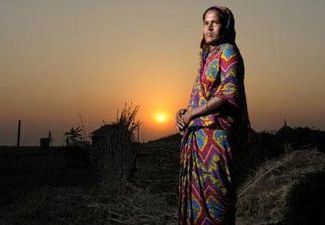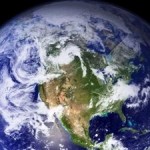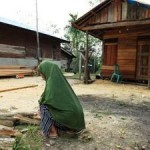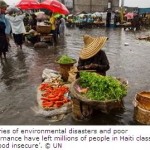 Climate change will leave families caught in a vicious spiral of falling incomes, rising food prices, and declining quality of food, leading to a devastating impact on the health of millions, Oxfam warns.
Climate change will leave families caught in a vicious spiral of falling incomes, rising food prices, and declining quality of food, leading to a devastating impact on the health of millions, Oxfam warns.
Oxfam’s new report “Growing Disruption: Climate Change, Food, and the Fight Against Hunger” offers an up-to-date assessment of the links between climate change and the many causes of hunger. While there is increasing awareness that climate change can harm crop production, the report shows that its threat on food security is much broader, hitting incomes, food quality and human health in ways that are not yet well understood.
At a time when one in eight people are going hungry and demand for food is rising, climate change will not only reduce production, it will reduce the nutritional value of both crops and livestock, worsen human health and lead to higher food prices. Climate change will mean that many more people will not be able to afford enough to eat and this toxic mix is likely to hit regions that are already more susceptible to food insecurity.
Tim Gore, Head of Policy for Oxfam’s GROW Campaign said, “Just as the evidence of man-made climate change is becoming stronger, so too is our understanding of how it hits people, especially around hunger.”
“We’ve long known that climate change will mean lost crops, but increasingly we’re seeing its impacts through higher food prices, lower earnings, more health problems and lower quality food too.”
Oxfam has previously estimated that the average price of staple foods is likely to more than double in the next 20 years compared with 2010 trend prices – with up to half of the increase caused by climate change.
The events highlighted in the report offer a glimpse of potential future impacts which will get worse and more frequent in urban as well as rural areas:
- In 2012, the drought in Russia cut the grain harvest by nearly 25 per cent, causing domestic prices of grain and bread to rocket. Oxfam research shows that the cumulative effects of the 2010 and 2012 droughts have driven many farmers into significant debt.
- In Pakistan, the devastating 2010 flood destroyed over 570,000 hectares of crop land in Punjab and affected more than 20 million people. Eighty per cent of food reserves were lost. The destruction of crops and drowning of animals meant not only that people had nothing to eat, but that they had nothing to trade to be able to buy food as it became available. The flood caused a massive 75% reduction in income across all households affected.
- A recent climate attribution study has confirmed that the 2011 drought in East Africa which affected over 13 million people and led to a famine in Somalia was more likely to have occurred because of climate change.
- In Nepal, Oxfam field surveys showed how disruption to the monsoons is creating further pressure on men to migrate leaving women alone to look after their families and having to undertake more daily waged labour reducing their energy levels. Women often also eat last prioritizing the men and children so they can fall into a downward spiral of poor diet, health and loss of strength and energy.
- In 2012, the US Midwest experienced its worst drought in 50 years, which reduced the expected maize crop by 25 per cent. This contributed to global maize prices rising by around 40 per cent.
Gore said, “We want a world in which everyone enjoys the right to enough affordable and nutritious food, and we cannot allow climate change to throw us off course.”
“Leaders listening to the latest findings from climate scientists must remember that a hot world is a hungry world. They must take urgent action to slash emissions and direct more resources to building a sustainable food system.”
Check the following link to read/download the Full Report:
http://www.oxfam.org/en/grow/policy/growing-disruption-climate-change-food-hunger
Source: Oxfam.














